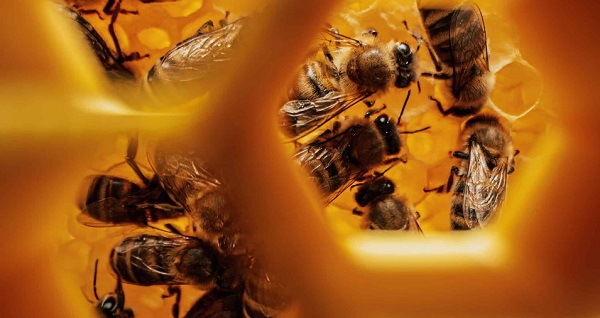Business
Taxpayers on the hook for millions in renovations at Trudeau’s mansions

“While there were multimillion-dollar renos being done to Trudeau’s mansion, housing prices have doubled for most ordinary working Canadians”
Taxpayers have been hit with a hefty, multimillion-dollar price tag to renovate Prime Minister Justin Trudeau’s mansion on the grounds of Rideau Hall in recent years.
Renovations at Rideau Cottage, the mansion where Trudeau has lived since being elected in 2015, cost taxpayers more than $5 million between 2016-17 and 2023-24, according to access-to-information records obtained by the Canadian Taxpayers Federation.
“While there were multimillion-dollar renos being done to Trudeau’s mansion, housing prices have doubled for most ordinary working Canadians,” said Kris Sims, CTF Alberta Director. “Trudeau needs to explain why this cost taxpayers so much.”
Last year, renovations at Rideau Cottage cost taxpayers $1.3 million.
That’s enough money to cover the annual grocery bills of 81 Canadian families, according to Canada’s Food Price Report.
Taxpayers have been on the hook for an average of $630,000 in annual renovation costs at Rideau Cottage since Trudeau moved into the two-storey, 22-room mansion.
Renovations have included improvements to the tennis court and “powder room,” thousands spent on painting, various RCMP security upgrades, new appliances, wall and roof repairs, paving and landscaping services and tree stump removal.
Taxpayers have also been billed for 10 piano tunings, according to the records.
“Does the prime minister’s powder room have a gold toilet? How can these upgrades cost this much?” Sims said. “Taxpayers don’t expect Trudeau to sleep in a tent, but racking-up reno bills costing Canadians more than half a million dollars per year is excessive.”
In addition to the $5 million in renovations at Rideau Cottage, taxpayers have also been on the hook for millions in renovations at Harrington Lake, the prime minister’s lakeside cottage estate.
In 2022, the CTF reported the National Capital Commission, which manages Canada’s six official residences, was spending $11 million on renovations at Harrington Lake.
Included in those costs was the construction of a backup cottage on the property for $2.5 million, and a kitchen renovation that cost more than $700,000.
The federal government spent an additional $6 million on renovations at Harrington Lake between 2016-17 and 2019-20, according to a 2021 NCC report.
Taxpayers were also on the hook for $1 million in renovations at 24 Sussex during the same period, despite the fact the property has sat vacant since 2015.
Despite long-standing claims that Canada’s official residences are subject to “chronic underfunding,” the CTF previously reported the NCC spent $135 million renovating the properties between 2006 and 2022.
“Canadians need to know why the NCC, a glorified parks and rec department that plants flowers in Ottawa, manages to blow millions and millions of dollars on these swanky buildings without much to show for it,” Sims said. “Why are there now three official residences for our one prime minister, and why did taxpayers pay for an entirely new mansion up at Harrington Lake? Who is living in that new house and why did it cost so much?”
Agriculture
Unstung Heroes: Canada’s Honey Bees are not Disappearing – They’re Thriving

Canada’s Bee Apocalypse began in 2008. That was the year the Canadian Association of Professional Apiculturists (CAPA) first reported unusually high rates of winter bee colony losses. At 35 percent, the winter die-off that year was more than twice the normal 15 percent rate of attrition.
“Successive annual losses at [these] levels … are unsustainable by Canadian beekeepers,” the CAPA warned. This set off an avalanche of dire media reports that now appear on a regular basis. Among the many examples over the years: Huge Honey Bee Losses Across Canada” and “Canada’s bee colonies see worst loss in 20 years”. As each of these stories reminds readers, the disappearance of honey bees will doom our food supply, given their crucial role in pollinating crops including canola, soyabeans, apples, tomatoes and berries.
This year the black-and-yellow striped Cassandras are back at work, with headlines shouting “Scientists warn of severe honeybee losses in 2025” and “The Bees are Disappearing Again”. If it’s spring, the bees must be disappearing. Again.
It is, however, mathematically impossible for any species to be in an allegedly continuous and calamitous state of decline over nearly two decades and never actually reduce in number. For despite the steady supply of grave warnings regarding their imminent collapse, Canada’s bees are actually buzzing with life.
In 2007, according to Statistics Canada, there were 589,000 honey bee colonies in Canada,; in 2024, they reached 829,000, just shy of 2021’s all-time high of 834,000. Figuring a conservative summertime average of 50,000 bees per colony, that means there are approximately 12 billion more honey bees in Canada today than when the Bee Apocalypse first hit.
As for beekeepers, their numbers have also been growing steadily, and now stand at 15,430 – the most recorded since 1988. As CAPA’s report acknowledges, “the Canadian beekeeping industry has been resilient and able to grow, as proven by the overall increase in the number of bee colonies since 2007 despite the difficulties faced every winter.”
How is this possible? As is usually the case where there’s a need to be filled, the market holds the answer.
It is true that Canadian honey bees face a long list of threats and challenges ranging from mites and viruses to Canada’s harsh winters. It is also true that they perform a crucial service in pollinating crops, the value of which is estimated at $7 billion annually. However, this underscores the fact that bees are a livestock bred for a particular agricultural purpose, no different from cattle, chickens or pen-raised salmon. They are a business.
And in spite of its alleged status as an environmental totem, the honey bee isn’t even native to North America. It was first imported by European settlers for its honey-making abilities in the 1600s. Since then, it has been cultivated with deliberate commercial intent – allowing it to outcompete native pollinators such as bumble bees and butterflies even though it is poorly suited to the local winter. (This highlights the irony of all those native-plant pollinator gardens virtuously installed in neighbourhoods across Canada that end up supporting an invasive honey bee population.)
The significance of the bee economy means that when a beehive collapses over the winter for whatever reason, beekeepers have plenty of motivation to regenerate that colony as swiftly as possible. While hives can create their own queens over time, this can be a slow process given the cold Canadian climate. The better option is to simply buy a new queen from a warmer country.
In 2024, Canada imported 300,000 queens worth $12 million, mostly from the U.S., Italy, Australia and Chile. That works out to $40 each. In a miracle of nature, each of these new queens can lay up to 2,500 eggs a day, and each egg takes just two to three weeks to reach full maturity as a worker or drone. It is also possible to import entire “bee packages” that include a queen and 8,000 to 10,000 bees.
As a result, even a devastating 50 percent winter loss rate, something that has occurred only rarely in Canada in individual provinces and never nationally, isn’t necessarily fatal to any beekeeping operation. The beekeeper can purchase imported queens in April, split their existing colonies and be back in business by May or June.
And regardless of the honey bee’s apparent difficulties with Canada’s unforgiving weather (efforts are ongoing to breed a hardier Canadian variant), there’s no shortage of bees worldwide. Earlier this year, the German statistical agency reported the global beehive count rose from 69 million in 1990 to 102 million in 2023. Another study looking back to 1961 by New Zealand researchers found the number of honey bee colonies has “nearly doubled” over this time, while honey production has “almost tripled.” As the New Zealand report observes, “Headlines of honey bee colony losses have given an
impression of large-scale global decline of the bee population that endangers beekeeping, and that the world is on the verge of mass starvation.” Such claims, the authors note, are “somewhat inaccurate.” In truth, things have never been better for bees around the world.
Here in Canada, the ability to import queens from other countries, together with their prodigious reproductive capabilities, backstops the amazing resiliency of the bee industry. Yes, bees die. Sometimes in large numbers. But – and this is the bit the headlines always ignore – they come back. Because the market needs them to come back.
If there is a real threat to Canada’s bee population, it’s not environmental. It’s the risk that unencumbered trade in bees might somehow be disrupted by tariffs or similar bone-headed human interventions. Left on their own, bees have no problem keeping busy.
The longer, original version of this story first appeared at C2CJournal.ca
Business
RFK Jr. planning new restrictions on drug advertising: report

Quick Hit:
The Trump administration is reportedly weighing new restrictions on pharmaceutical ads—an effort long backed by Health Secretary Robert F. Kennedy Jr. Proposals include stricter disclosure rules and ending tax breaks.
Key Details:
-
Two key proposals under review: requiring longer side-effect disclosures in TV ads and removing pharma’s tax deduction for ad spending.
-
In 2024, drug companies spent $10.8 billion on direct-to-consumer ads, with AbbVie and Pfizer among the top spenders.
-
RFK Jr. and HHS officials say the goal is to restore “rigorous oversight” over drug promotions, though no final decision has been made.
Diving Deeper:
According to a Bloomberg report, the Trump administration is advancing plans to rein in direct-to-consumer pharmaceutical advertising—a practice legal only in the U.S. and New Zealand. Rather than banning the ads outright, which could lead to lawsuits, officials are eyeing legal and financial hurdles to limit their spread. These include mandating extended disclosures of side effects and ending tax deductions for ad spending—two measures that could severely limit ad volume, especially on TV.
Health and Human Services Secretary Robert F. Kennedy Jr., who has long called for tougher restrictions on drug marketing, is closely aligned with the effort. “We are exploring ways to restore more rigorous oversight and improve the quality of information presented to American consumers,” said HHS spokesman Andrew Nixon in a written statement. Kennedy himself told Sen. Josh Hawley in May that an announcement on tax policy changes could come “within the next few weeks.”
The ad market at stake is enormous. Drugmakers spent $10.8 billion last year promoting treatments directly to consumers, per data from MediaRadar. AbbVie led the pack, shelling out $2 billion—largely to market its anti-inflammatory drugs Skyrizi and Rinvoq, which alone earned the company over $5 billion in Q1 of 2025.
AbbVie’s chief commercial officer Jeff Stewart admitted during a May conference that new restrictions could force the company to “pivot,” possibly by shifting marketing toward disease awareness campaigns or digital platforms.
Pharma’s deep roots in broadcast advertising—making up 59% of its ad spend in 2024—suggest the impact could be dramatic. That shift would mark a reversal of policy changes made in 1997, when the FDA relaxed requirements for side-effect disclosures, opening the floodgates for modern TV drug commercials.
Supporters of stricter oversight argue that U.S. drug consumption is inflated because of these ads, while critics warn of economic consequences. Jim Potter of the Coalition for Healthcare Communication noted that reinstating tougher ad rules could make broadcast placements “impractical.” Harvard professor Meredith Rosenthal agreed, adding that while ads sometimes encourage patients to seek care, they can also push costly brand-name drugs over generics.
Beyond disclosure rules, the administration is considering changes to the tax code—specifically eliminating the industry’s ability to write off advertising as a business expense. This idea was floated during talks over Trump’s original tax reform but was ultimately dropped from the final bill.
-

 Business2 days ago
Business2 days agoTrump makes impact on G7 before he makes his exit
-

 Alberta2 days ago
Alberta2 days agoCentral Alberta MP resigns to give Conservative leader Pierre Poilievre a chance to regain a seat in Parliament
-

 Alberta2 days ago
Alberta2 days agoAlberta health care blockbuster: Province eliminating AHS Health Zones in favour of local decision-making!
-

 Daily Caller2 days ago
Daily Caller2 days ago‘Not Held Hostage Anymore’: Economist Explains How America Benefits If Trump Gets Oil And Gas Expansion
-

 Alberta1 day ago
Alberta1 day agoCalls for a new pipeline to the coast are only getting louder
-

 Censorship Industrial Complex1 day ago
Censorship Industrial Complex1 day agoJordan Peterson reveals DEI ‘expert’ serving as his ‘re-education coach’ for opposing LGBT agenda
-

 Business1 day ago
Business1 day agoCanada’s economic pain could be a blessing in disguise
-

 Alberta2 days ago
Alberta2 days agoAlberta pro-life group says health officials admit many babies are left to die after failed abortions







